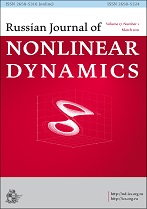|
This article is cited in 1 scientific paper (total in 1 paper)
Nonlinear engineering and robotics
EMG-Based Grasping Force Estimation for Robot Skill Transfer Learning
W. Ali, S. Kolyubin
ITMO University,
Kronverkskiy prosp. 49, Sankt-Peterburg, 197101 Russia
Abstract:
In this study, we discuss a new machine learning architecture, the multilayer preceptron-
random forest regressors pipeline (MLP-RF model), which stacks two ML regressors of different
kinds to estimate the generated gripping forces from recorded surface electromyographic activity
signals (EMG) during a gripping task. We evaluate our proposed approach on a publicly available
dataset, putEMG-Force, which represents a sEMG-Force data profile. The sEMG signals were
then filtered and preprocessed to get the features-target data frame that will be used to train
the proposed ML model. The proposed ML model is a pipeline of stacking 2 different natural
ML models; a random forest regressor model (RF regressor) and a multiple layer perceptron
artificial neural network (MLP regressor). The models were stacked together, and the outputs
were penalized by a Ridge regressor to get the best estimation of both models. The model was
evaluated by different metrics; mean squared error and coefficient of determination, or r2 score,
to improve the model prediction performance. We tuned the most significant hyperparameters
of each of the MLP-RF model components using a random search algorithm followed by a grid
search algorithm. Finally, we evaluated our MLP-RF model performance on the data by training
a recurrent neural network consisting of 2 LSTM layers, 2 dropouts, and one dense layer on the
same data (as it is the common approach for problems with sequential datasets) and comparing
the prediction results with our proposed model. The results show that the MLP-RF outperforms
the RNN model.
Keywords:
sEMG signals, multilayer perceptron regressor (MLP), random forest regressor
(RF), recurrent neural network (RNN), robot grasping forces, skill transfer learning.
Received: 13.09.2022
Accepted: 13.12.2022
Citation:
W. Ali, S. Kolyubin, “EMG-Based Grasping Force Estimation for Robot Skill Transfer Learning”, Rus. J. Nonlin. Dyn., 18:5 (2022), 859–872
Linking options:
https://www.mathnet.ru/eng/nd829 https://www.mathnet.ru/eng/nd/v18/i5/p859
|

| Statistics & downloads: |
| Abstract page: | 115 | | Full-text PDF : | 54 | | References: | 13 |
|




 Contact us:
Contact us: Terms of Use
Terms of Use
 Registration to the website
Registration to the website Logotypes
Logotypes








 Citation in format
Citation in format 
